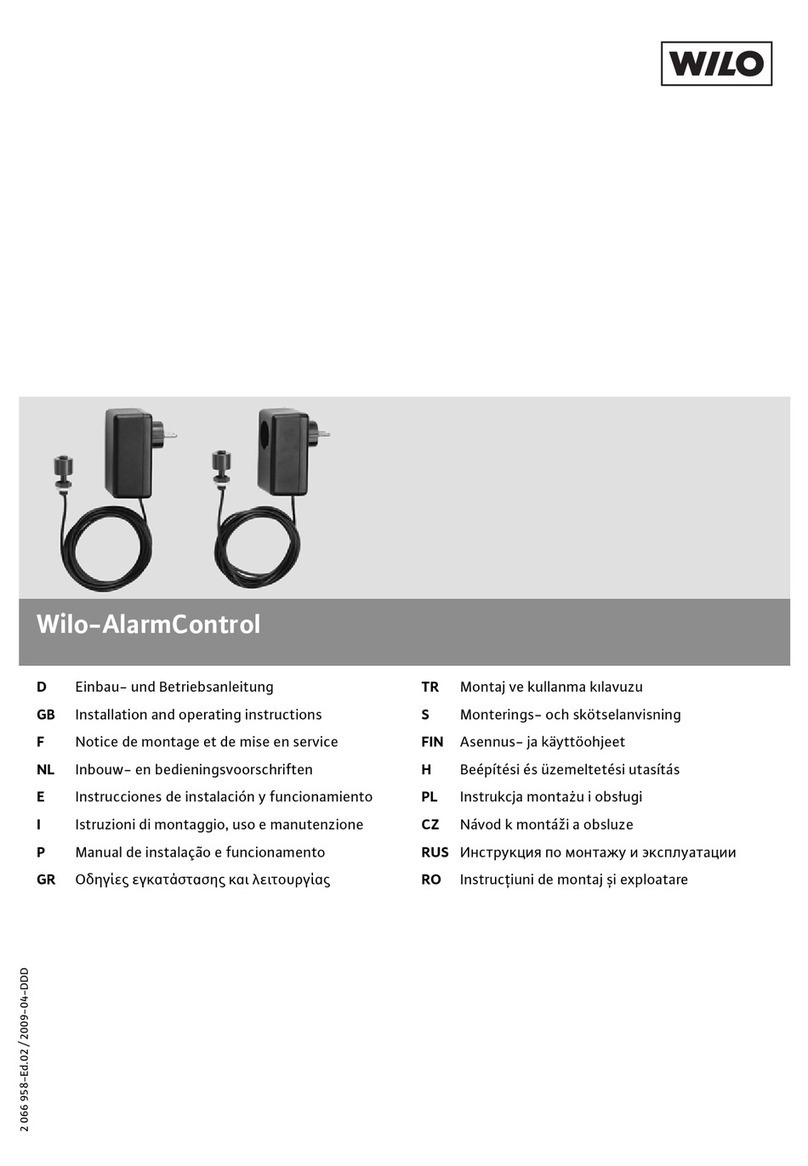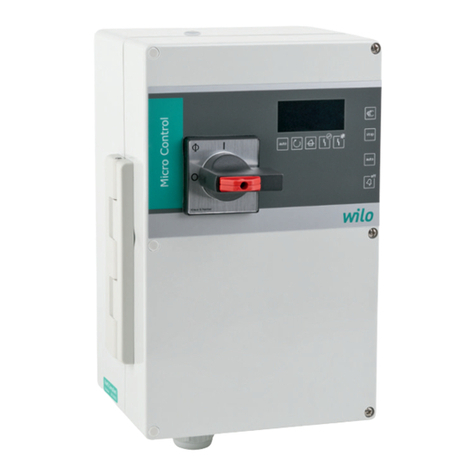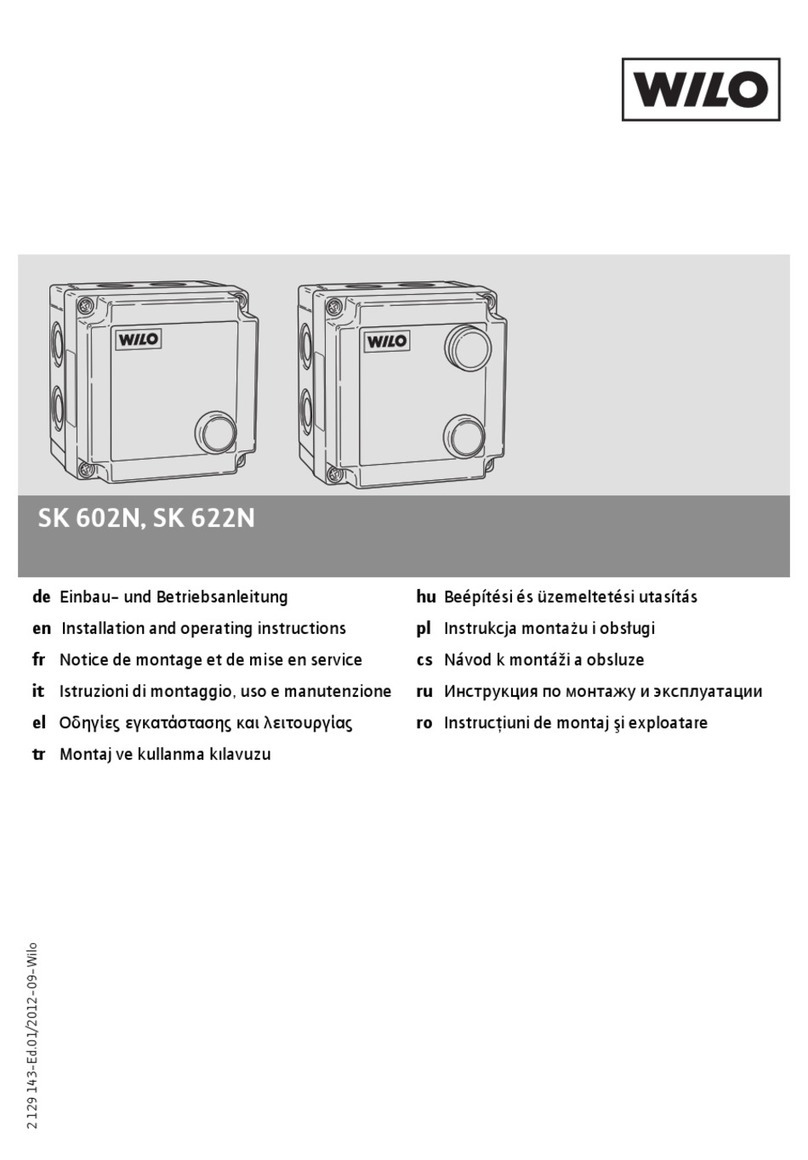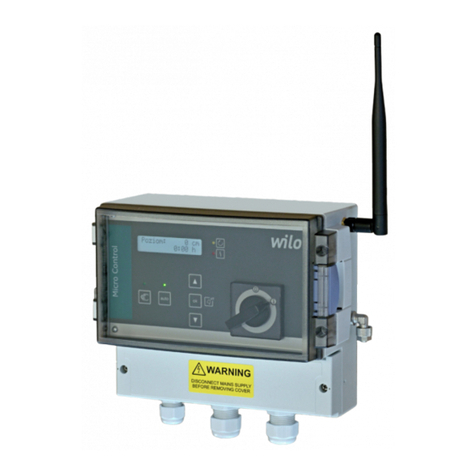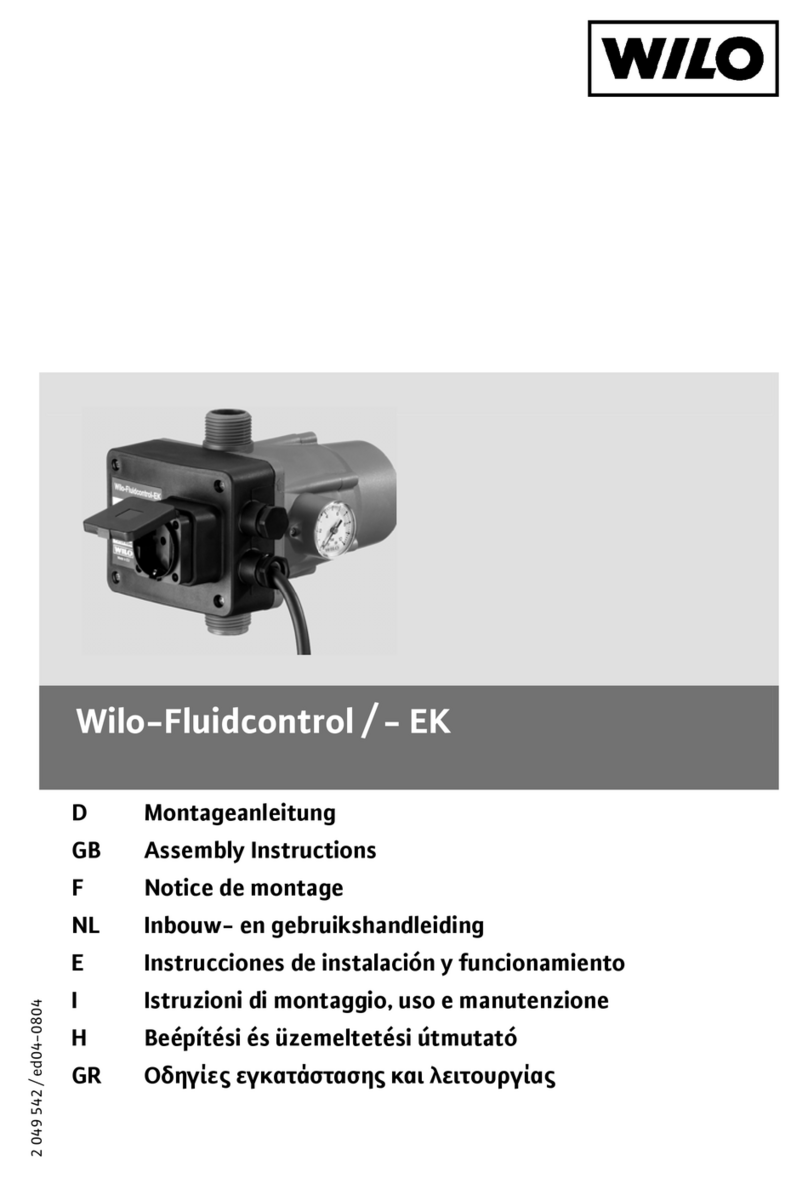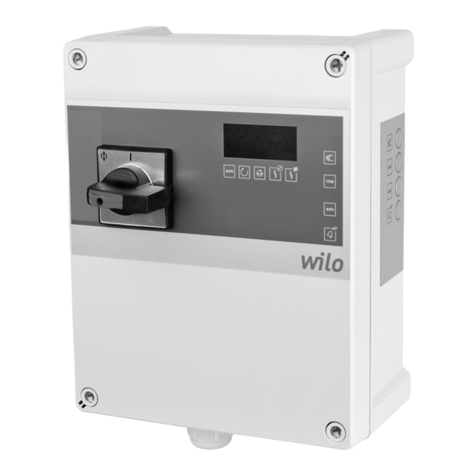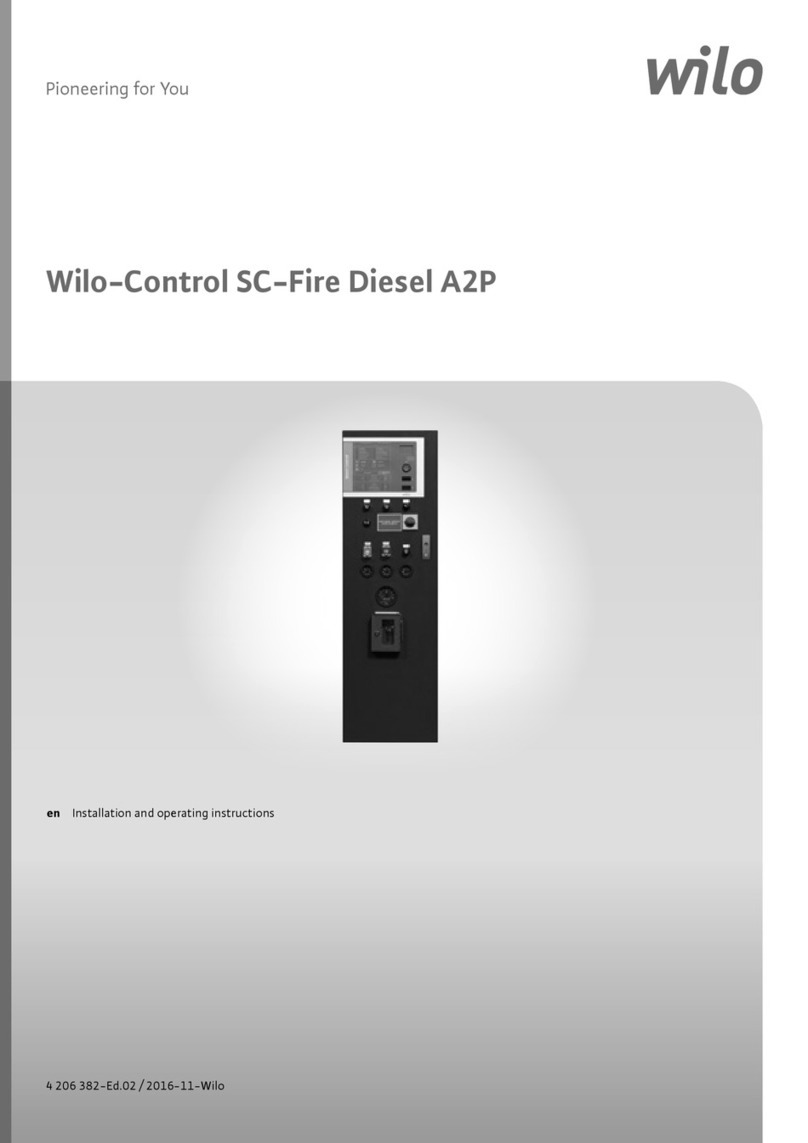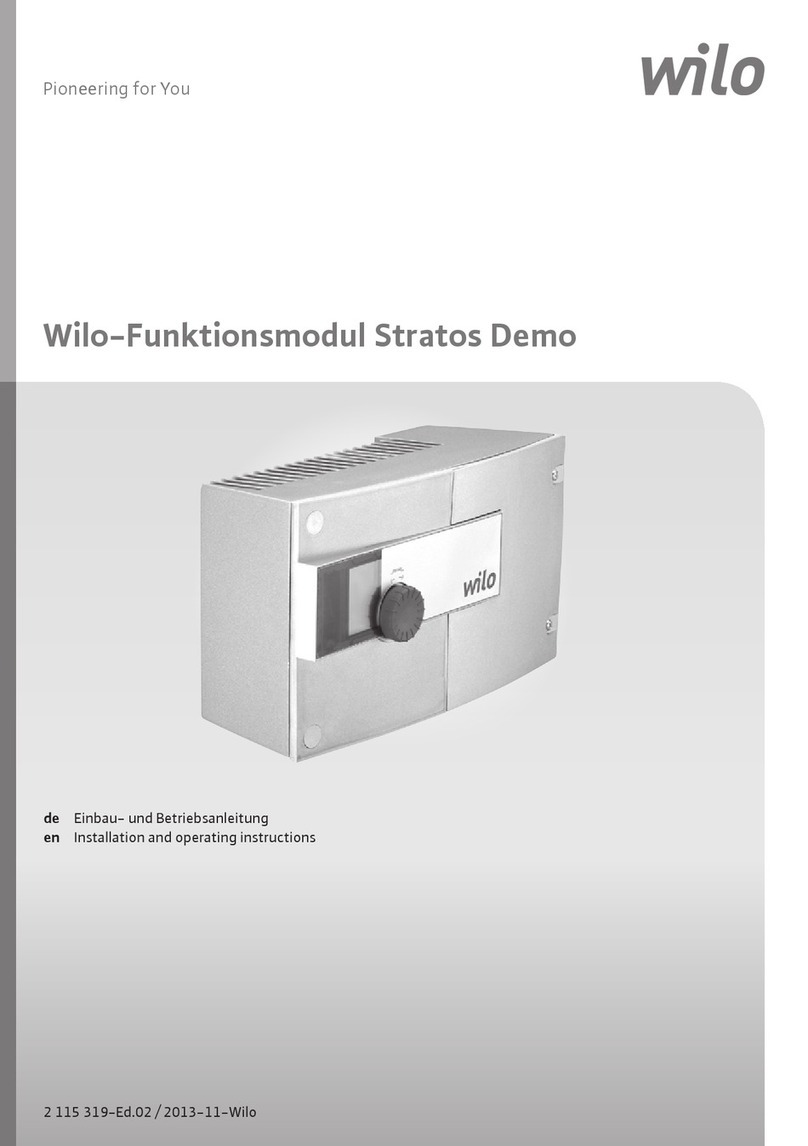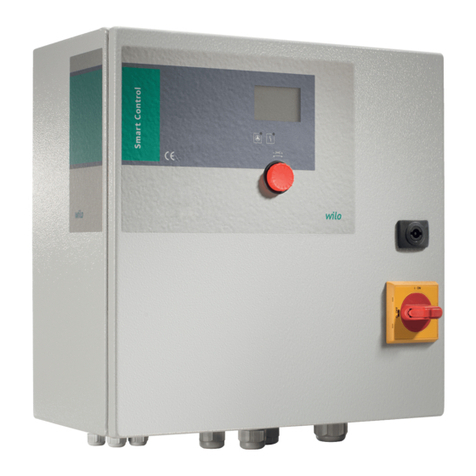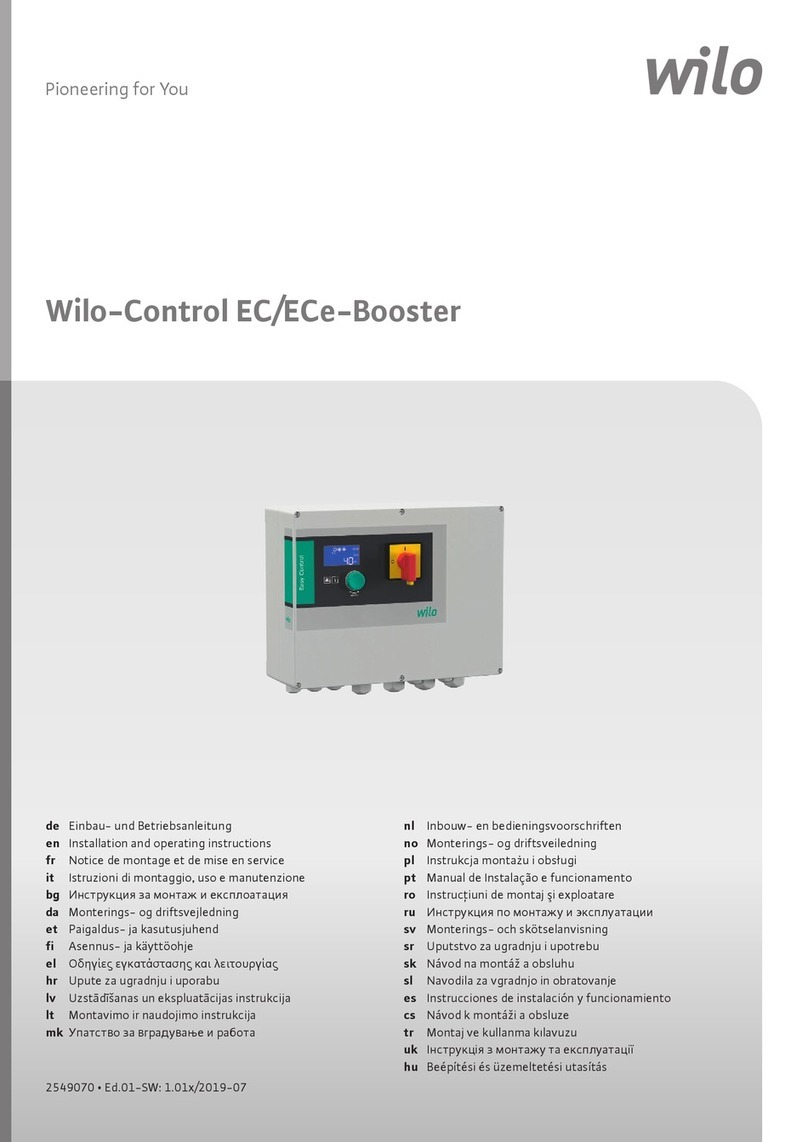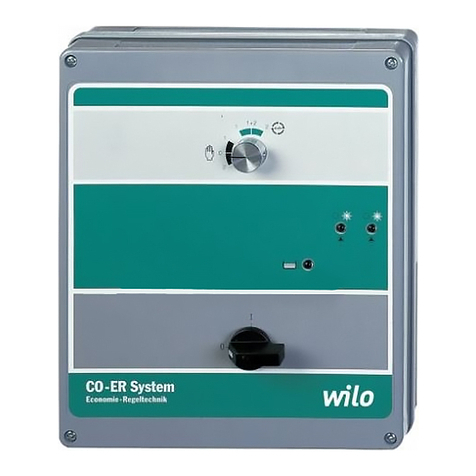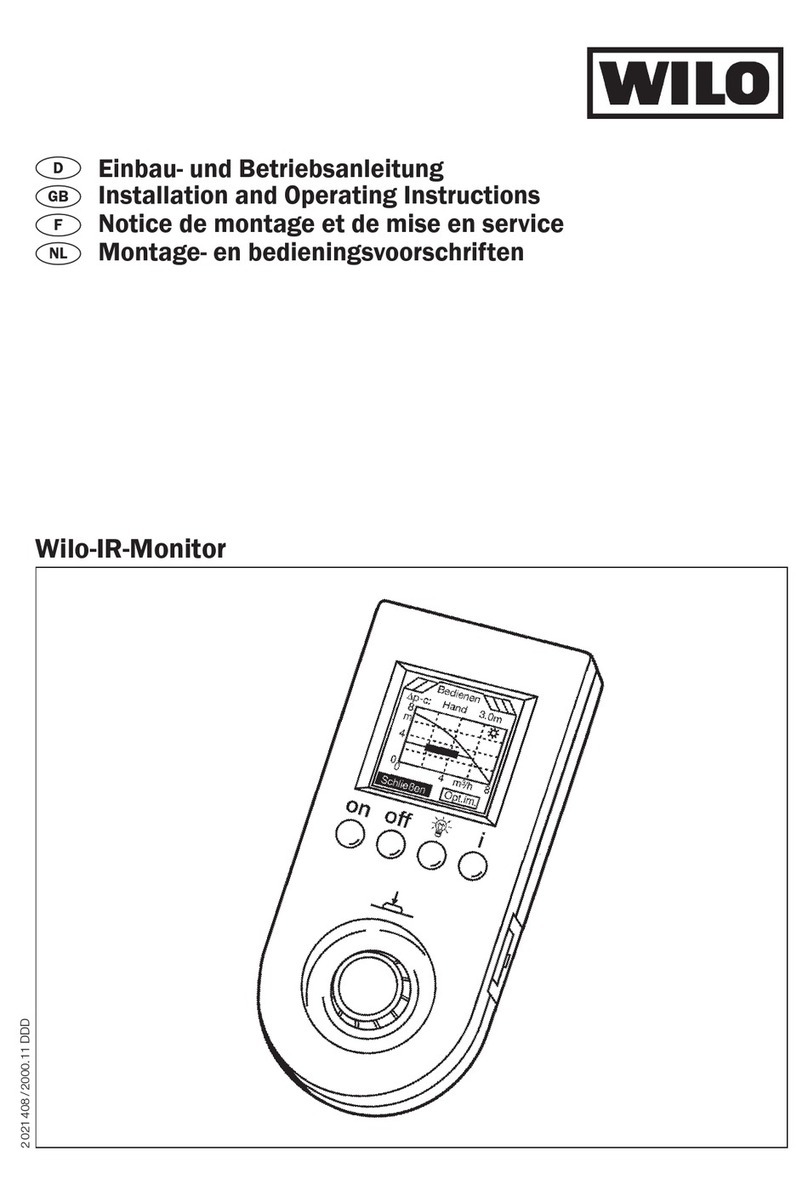
en
Installation and operating instructions • Wilo-Control EC-HVAC • Ed.01-SW: 3.02x/2023-03 3
Table of contents
1 General information...................................................................4
1.1 About these instructions ..................................................... 4
1.2 Copyright ............................................................................... 4
1.3 Subject to change................................................................. 4
1.4 Exclusion from warranty and liability.................................4
2 Safety...........................................................................................4
2.1 Identification of safety instructions................................... 4
2.2 Personnel qualifications....................................................... 5
2.3 Electrical work .......................................................................6
2.4 Monitoring devices ............................................................... 6
2.5 Installing/dismantling........................................................... 6
2.6 During operation ................................................................... 6
2.7 Maintenance tasks................................................................ 6
2.8 Operator responsibilities...................................................... 7
3 Intended use ...............................................................................7
4 Product description....................................................................7
4.1 Structure ................................................................................ 7
4.2 How it works.......................................................................... 7
4.3 Technical data .......................................................................7
4.4 Inputs and outputs ............................................................... 8
4.5 Type key................................................................................. 8
4.6 Scope of delivery................................................................... 8
4.7 Accessories ............................................................................ 8
5 Transportation and storage.......................................................9
5.1 Delivery................................................................................... 9
5.2 Transport................................................................................ 9
5.3 Storage ................................................................................... 9
6 Installation and electrical connection......................................9
6.1 Personnel qualifications....................................................... 9
6.2 Installation types................................................................... 9
6.3 Operator responsibilities...................................................... 9
6.4 Installation ............................................................................. 9
6.5 Electrical connection..........................................................10
7 Operation ..................................................................................16
7.1 How it works........................................................................17
7.2 Menu control........................................................................18
7.3 Menu type: Main menu or Easy Actions menu................18
7.4 Call up the menu .................................................................18
7.5 Quick access to “Easy Actions”.........................................18
7.6 Factory settings ..................................................................19
8 Commissioning .........................................................................19
8.1 Operator responsibilities....................................................19
8.2 Activating the switchgear..................................................20
8.3 Start initial configuration...................................................20
8.4 Start automatic mode ........................................................30
8.5 During operation .................................................................30
9 Shut-down ................................................................................32
9.1 Personnel qualifications.....................................................32
9.2 Operator responsibilities....................................................32
9.3 Shut-down...........................................................................32
9.4 Removal................................................................................32
10 Maintenance ..............................................................................33
10.1 Maintenance intervals .........................................................33
10.2 Maintenance tasks ...............................................................33
11 Faults, causes and remedies ....................................................33
11.1 Operator responsibilities.....................................................33
11.2 Fault indication.....................................................................33
11.3 Fault acknowledgement .....................................................34
11.4 Fault memory........................................................................34
11.5 Error codes ............................................................................34
11.6 Further steps for troubleshooting .....................................35
12 Disposal......................................................................................35
12.1 Information on the collection of used electrical and elec-
tronic products .....................................................................35
13 Appendix....................................................................................35
13.1 System impedances.............................................................36
13.2 Overview of the symbols ....................................................37
13.3 Overview of terminal diagrams ..........................................37
13.4 ModBus: Data types .............................................................38
13.5 ModBus: Parameter overview.............................................39

